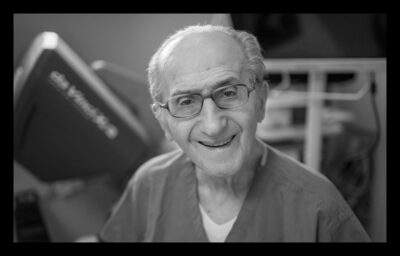Introduction of multi-step lock system of entry to the
Departments and Clinics of the Faculty of Dentistry
The departments and clinics of the Faculty of Dentistry are located in three separate buildings, located one street away from each other and the university’s Inner Clinical Center. Taking into consideration the unique professional and location-related conditions, it is necessary to implement a special entry system to the buildings of the Faculty that is similar to other systems, but is independently operated and involves a multi-step, lock system of entry. The goal of the new entry system is to screen patients that show symptoms of, or have been infected by, COVID-19.
The doctors and assistants participating in patient care in the field of dentistry and oral surgery are among the most at-risk care providers from an epidemiological standpoint. A basic condition of providing care for suspected and confirmed cases is the complete and continuous supply of protective equipment for the departments and clinics.
The multi-step, lock system of entry will function as follows:
- Patients report at the checkpoint, where after having their information recorded, they will receive a checklist provided by the Hospital Hygiene Department of Semmelweis University, which is available here.
- The patient completes and signs the checklist.
- The health care worker on duty evaluates the checklist (checking the box whether the patient is a “suspect case” or “not a suspect case”), and measures the temperature of the patient using a contactless thermometer, recording the result on the checklist and signing it. The assistants performing these tasks must be wearing gowns, surgical masks, protective goggles and rubber gloves.
- If during the course of questioning the patient it turns out that their visit is non-urgent, they should be asked – after providing reassurance and asking for their patience – to return to the clinic after the state of emergency is over. If their case is non-urgent but they fall into the “suspect case” category, a swabbing sample must be taken from them in the septic room, the patients must be given a mask, rubber gloves and a long-sleeve gown to wear, and they must wait in a separate room. The case must be reported to the head of the Epidemiological group in charge of dental care, the medical officer in charge and/or the head or deputy head of the department, who will initiate the required epidemiological process.
- In every case where there is doubt as to whether the patient’s complaints require urgent or non-urgent dental or oral surgery care, they must be examined to determine to a certainty if they require emergency care or not.
- If based on the anamnesis (traveled to a foreign country within last 14 days, was in proven close contact with a confirmed infected case, exhibits coughing or high temperature symptoms) the patient is classified into the “suspect case” category, they must be informed of this. After that, in the septic room they must be given a mask, rubber gloves and a long-sleeve gown to wear, and the head assistant must inform the medical officer in charge, who will take the required next steps.
- The medical officer in charge – if necessary – will perform the emergency intervention in the septic room designated and equipped for this purpose. The doctor and the assistants, wearing protective gear (surgical cap, plexiglass facemask/goggles, FFP3 mask, waterproof, long-sleeve protective gown, rubber gloves) take a swab sample from the patient to test whether they are infected, and – if possible using single-use tools – they perform the intervention. The surfaces of the room must be disinfected using anti-viral disinfectant, while the tools must be handled and sterilized in the usual manner. The used single-use materials must be treated as hazardous waste.
- Due to the heightened risk of infection (aerosolization), the use of dental tools that use water as a coolant is not recommended, only in cases where it is highly justified.
- Following completion of their dental or oral surgery intervention, patients suspected of being infected must be given surgical masks and rubber gloves to wear and taken to a separate room, where the medical officer in charge will administer the steps in accordance with university protocol. The sample taken must be placed in triple plastic-bag packaging and delivered to the Central Laboratory with the next lab sample transport and ordered via the Medsol infomedical system.
The multi-step entry system introduced at the departments and clinics of the Faculty of Dentistry is part of the reporting system of Semmelweis University implemented for a state of emergency. When encountering a suspected case, the medical officer in charge should inform the director or deputy director of the department, who along with taking the necessary measures will inform the head of the Epidemiological group in charge of dental care.
Prepared by: Faculty of Dentistry


